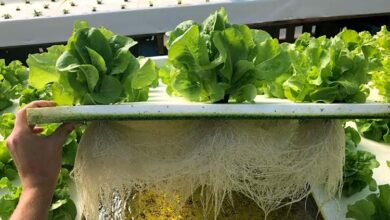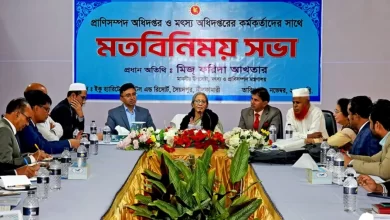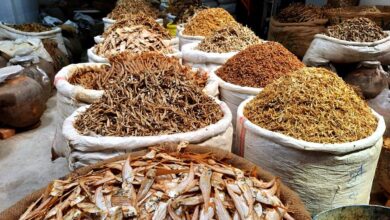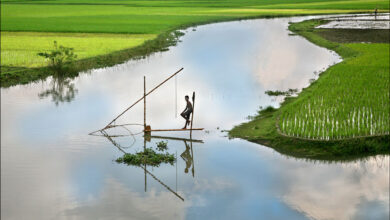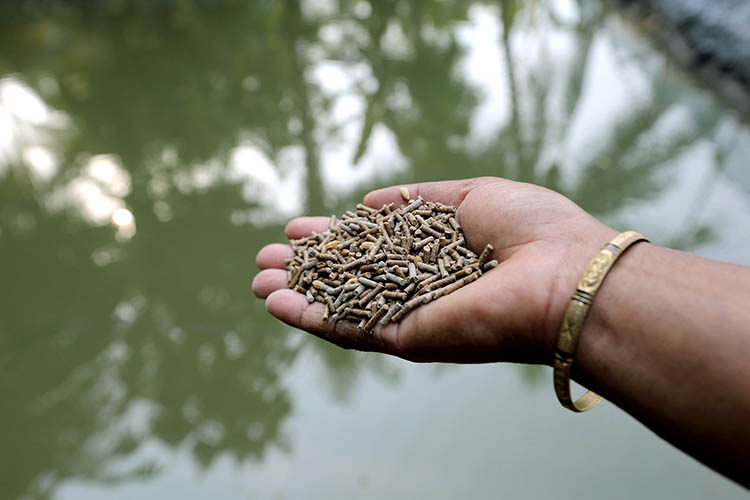
The demand for food is rising daily due to population growth and rising incomes, particularly for expensive goods like meat and seafood. Due to the inability of natural fish production in Bangladesh to fulfill the growing demands of the people, aquaculture is under pressure to increase production in order to produce fish with a greater biomass.
Necessity of high-quality feed:
The only way to accomplish this is by fish farming, as the natural food and spawn found in the water are insufficient to support the growth and production of fish. Therefore, to raise the production per unit area, high-quality supplemental feed is required. A balanced diet and the use of high-quality fish fry are essential for the success of both intensive and semi-intensive fish culture.
Over 1 million tons of commercial pelleted feed are now being developed for use by aquaculture farmers in Bangladesh as a result of the country’s significant increase in the use of aquaculture feeds in recent years. Small feed-making businesses located in villages are preparing an additional 0.4 million tons of locally formulated and processed diets. Many aquaculture producers have been able to increase productivity because to the rapid development in the usage of formulated feeds, but this has also brought up a number of concerns about feed quality, feed management effectiveness, and environmental sustainability.
The feeding of fish with specially prepared diets has increased the intensity of production of major fish species, including major carps, climbing perch (Anabas testudineus), pangas (Pangasianodon hypophthalmus), and Nile tilapia (Oreochromis niloticus).
Feed Types:
Fish ponds employ two different kinds of food:
- Organic food
- Supplementary/ Commercial feeds
The pond contains naturally occurring food. Fish, worms, insects, snails, bacteria, plankton, and aquatic plants are a few possible inclusions. The quality of the water has a big impact on their quantity. Fertilization, especially organic fertilization, and liming might assist farmers in giving a healthy supply of natural food.
Supplementary feeds are meals that are given to the fish in the pond on a regular basis. Typically, they are made of inexpensive, readily available materials from the area, including kitchen scraps, terrestrial plants, or agricultural byproducts.
Commercial meals might likewise be given out on a regular basis. They are created using a blend of carefully chosen components to offer all the essential nutrients. There are two forms of commercially produced fish feed: wet pelleted feeds and dry pelleted feeds. Because of its easy application, long shelf life, and accessible availability, dry feed is a better option. The principal components for the production of fish feed are fish meal (5–15 percent inclusion), fish bran (20–50 percent inclusion), maize (5–20 percent inclusion), soybean meal (10–30 percent inclusion), mustard oil cake (10–25 percent inclusion), and meat and bone meal (10–20 percent inclusion).
De-oiled rice bran (DORB), grade A rice bran (85%–90% bran and 10-15% husk), and grade B rice bran (60–50% bran and 40–50% husk) are the three varieties of rice bran that are used. Grade A rice bran and DORB have protein contents of roughly 10–13 percent and 12–17%, respectively.
Fish meals for sinking and floating species usually contain 10–20% and 20–30%, respectively, of soybean meal or cake. The nutrient composition of local fish meal, which is produced from a range of garbage fish, crabs, and other aquatic animals, varies greatly.
Enhancing feed usage efficiency is crucial because feed is the biggest expense in fish production. However, some of the feed’s nutrient-rich elements are too complex for the animal to properly digest and metabolize, which leads to partial or incomplete nutrient absorption. This has a detrimental effect on the animals’ growth and general health. By adding particular enzymes to fish feed, anti-nutritional factors can be countered and dietary energy and amino acid consumption can be improved, which will increase fish performance.
Value chains, which link feed providers and farmers, have grown alongside the formulated feed sector. However, a greater number of rural farmers still do not have access to formulated feed. Fish farms must have access to high-quality inputs like feed and fry at competitive prices and at the appropriate times in order to increase fish production in a sustainable manner.
Farhana Islam
Agriculturist, Researcher
Fisheries Resource Management, CVASU

